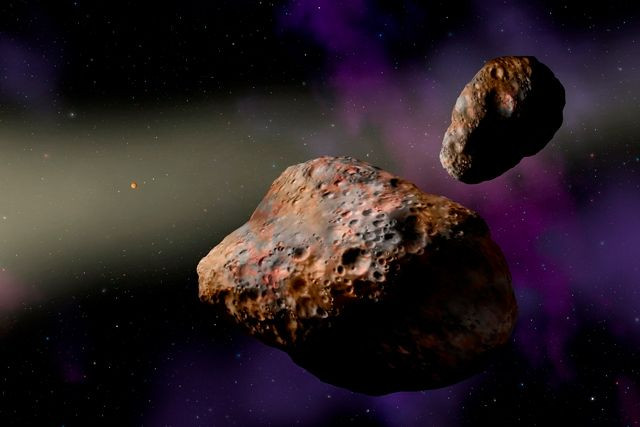Unusual ‘Trojan’ Asteroids Shed Light On Early Solar System’s Planetary Shake-Up

Nearly 4.5 billion years ago, the sun formed at the center of a nebula, giving rise to what we know as the solar system. The birth of our star was followed by accretion of material and formation of planets, including gas-giants like Jupiter and rocky worlds like Earth.
However, if a new study is anything to go by, the birth of planets during the very early days of the solar system wasn’t very peaceful. The newborn babies, particularly the gas-giants in outer regions of the system, moved from one point to other, disturbing everything on their path.
The ancient planetary shake-up has long been predicted by astronomers across the globe. In fact, the orbital arrangement of Kuiper belt objects in the trans-Neptunian region serves as the evidence of newborn gas-giants’ migration and instability. However, nobody knew when exactly the shake-up occurred.
Some thought the event occurred 700 million years after sun’s birth, but researchers from Southwest Research Institute have shown the instability occurred much earlier than that, approximately within first 100 million years of solar system’s formation. The group came to this theory after studying the dynamics of two Trojans of our stellar neighborhood.
A Trojan, as scientists described, isn’t a computer malware, but an asteroid that shares the orbit of a planet. In this case, the team looked into the birth and evolution of Patroclus and Menoetius — a very unusual pair of asteroids orbiting each other.
The two bodies, measuring around 70 miles in diameter, make up the only binary in the family of Trojans. They stay in the proximity of Jupiter and orbit collectively around the sun, with one staying ahead and other trailing the gas giant.
Most importantly, "observations of today's Kuiper Belt show that binaries like these [Patroclus and Menoetius] were quite common in ancient times," William Bottke, the co-author of the study, said in a statement. "The question is how to interpret the survivors."
So, the team took the Trojans into account and ran a series of simulations with different scenarios of planetary instability. They considered planetary migrations at different time periods — at a gap of several hundred million years — and concluded only a shake-up occurring some 100 million years after solar system’s formation could leave Patroclus and Menoetius as leftovers.
Explaining the findings, the team stated as Neptune and Uranus moved outward during that period, the planets interacted with a large population of small bodies in the region. The encounter flung many bodies into the inner solar system, with some being trapped as Trojan asteroids. The researchers also stressed if these migrations and encounters would have occurred later, the binaries would have disrupted, leaving nothing to be trapped as Trojans.
The findings of the work also indicated the craters that formed on the surface of Mars, moon, and Mercury some 4 billion years ago are not made by objects flung from the migration of gas-giants. Instead, they may have formed by small-body leftovers from the formation of planets.
The study titled, "Evidence for very early migration of the Solar System planets from the Patroclus–Menoetius binary Jupiter Trojan," was published Sept. 10 in the journal Nature Astronomy.
© Copyright IBTimes 2025. All rights reserved.





















